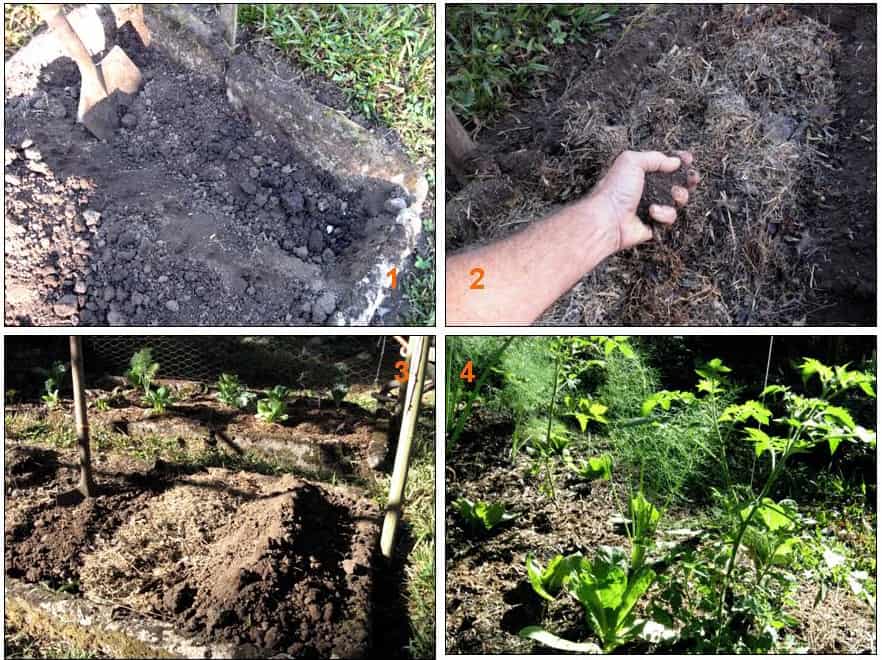One of the advantages of exhibiting our farm’s herbal products at our local organic market has been the opportunity to talk with other farmers and gardeners. It’s a great way to catch up on new methods of growing food organically here in the tropics. One of the topics that’s buzzing around the grapevine is hügelkultur, which is a unique method of restoring natural fertility in our soils.
Hügelkultur is a German word meaning mound culture or hill culture. It was practiced in German and Eastern European societies for hundreds of years and has been applied as a new technique to prevent erosion.
Long, raised beds are constructed on contours with the land to catch rainwater runoff before it gains momentum to cause erosion. Trees and crops can be planted on these long beds and benefit from the extra moisture that has been trapped from the rainwater runoff. On large farms, these long, raised beds are often made with earthmoving equipment like a backhoe.
Some inventive farmers began experimenting with burying any biomass from clearing the land into the long, raised contoured beds. Sod, leaves, branches and even logs were all incorporated to make the bed higher and stronger.
As the years go by, the biomass decomposes, leaving mineral rich humus for the new crops and trees. This humus also acts like a sponge to hold moisture during dry periods.
The results have been very promising and you can find more on the web on this subject.
Erick Rifkin, who exhibits his products at the organic market, has been experimenting with hüglekultur at his farm Joya del Sol, and has come up with a new raised bed structure that’s worth sharing. Erick told me that he had difficulties growing vegetables in regular garden beds. Invasive roots from nearby trees seemed to take most of the soil’s fertility instead of the plants.
Erick went about designing a 3-foot high, no-stoop raised garden bed with a shallow 3-inch thick cement floor to prevent the tree roots from invading the planting bed. When he began to fill in the raised bed, he started filling in the bottom part with logs, branches and leaves as mentioned above. Next came the top layer of soil enriched with worm compost, and the worms, too. He said the only problem he has had so far is dealing with the prolific growth rate of everything he planted. You can follow his effort on Facebook.
During the dry season, many gardeners have plenty of grass clippings and dried leaves that can be conveniently buried in garden beds or used as a top dressing around your plants to keep the soil moist during this hot season.
Here’s a four-step guide to enrich your soil from green gold to biomass.

- Dig a trench across the garden bed and loosen the soil at the bottom. Look for unwanted roots and grubs.
- Apply plenty of organic material to the trench, plus some aged compost to activate the beneficial microbes that do the job of decomposing.
- Work along repeating step 1 and 2 until you reach the end of the bed. Rake the bed and water it very well.
- Plant seeds or transplants from the greenhouse to your new garden bed. Use grass clippings and leaves to mulch around the plants. Sit back and watch them grow!
Again and again we can see how tuned-in our ancestors were with natural intelligence. They understood how to return the gift to nature so new harvests would be bountiful. When will we, the artificial intelligence society, learn to design biological solutions to our daily lives?
So bury that biomass to make the earth rich again…if not, then we will burn our home to ashes.
Thanks Erick Rifkin for your raised bed design.
Read more of Ed Bernhardt’s monthly Home Gardening columns here.
This article first appeared in 2017






